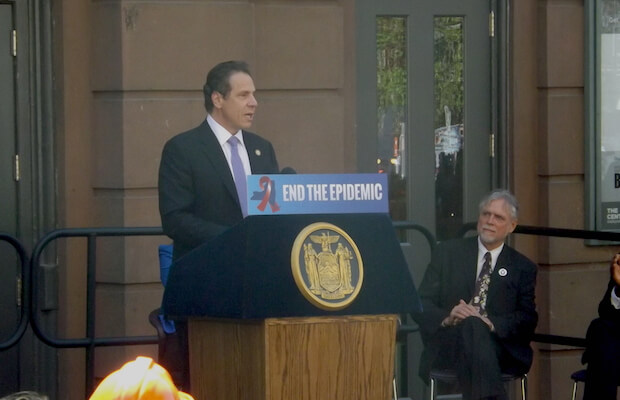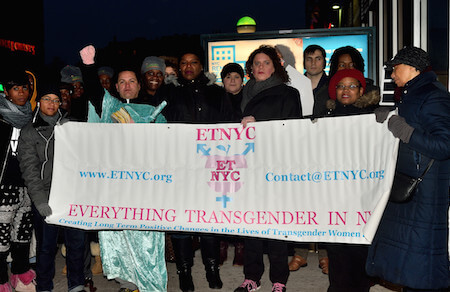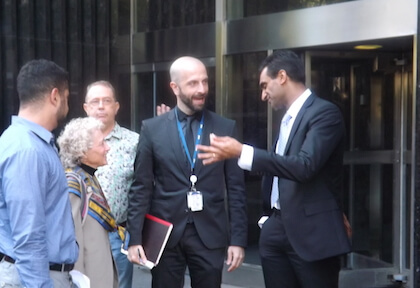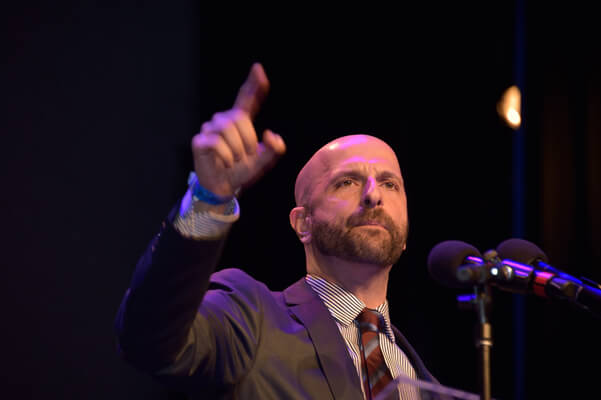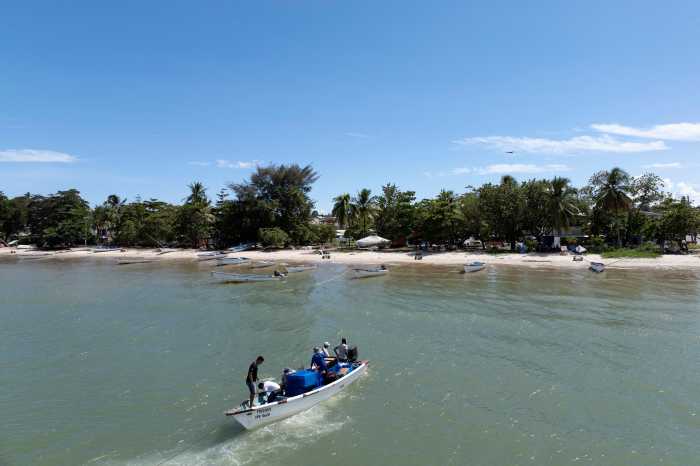In late May of last year, AIDS activists asked Mayor Bill de Blasio to add $10 million to the city’s budget for the Plan to End AIDS to match Governor Andrew Cuomo’s $10 million contribution to that plan in the state budget. The city’s Office of Management and Budget (OMB) checked if Cuomo had actually kicked in $10 million.
In late June, Frank Walsh, the state’s chief budget examiner, confirmed that the $10 million was in the budget for the state fiscal year that began that April 1. But OMB records from the first half of 2015 obtained by Gay City News using the state Freedom of Information Law suggest that OMB staffers did not believe him.
The agency contacted Sean O’Keefe, a senior staffer on the State Assembly’s Ways & Means Committee. He wrote in an email to OMB that $5 million resulted from a “budget agreement” on funding the state’s health insurance exchange and the other “$5 million ($2.5 million for two years)” was in the budget. OMB concluded that only $5 million was new money.
Albany’s limited budget commitment could hobble ambitious plan to curb epidemic
“Governor’s office has claimed it funded $10M in this year’s enacted budget for Ending the AIDS epidemic,” an OMB staffer wrote to her colleagues in a June 24 email.
Only half of the $10 million was “an explicit $5M appropriation,” the staffer wrote. Of the remaining amount, $2.5 million was an increase in the budget for the AIDS Institute, a unit of the state health department, while the other $2.5 million was in the state’s Medicaid contracting budget.
“Neither of these two amounts have been explicitly identified in the budget as for the purpose of the governor’s initiative to end the AIDS epidemic,” the staffer wrote. “Further, it is safe to say that the latter appropriation for contractual services is not new funding.”
Ultimately, the city spent $8.5 million on the plan in its current fiscal year, which began on July 1, with the City Council contributing $6.6 million and the de Blasio administration contributing $1.9 million.
AIDS activists had originally sought more than $100 million from the Cuomo administration in the plan’s first year. Had they won that, they presumably would have sought a match from the de Blasio administration. They ended up with less than $20 million from all sources for an ambitious plan that aims to reduce new HIV infections from the current roughly 3,000 a year in the state to 750 annually by 2020.
In part, the plan has fallen victim to a governor who is known for making bold promises, as he did when he endorsed it in 2014, and not following through.
And Cuomo, a Democrat, is also busily attacking de Blasio, also a Democrat, as he has attacked other leading Democrats in the state. The distrust between the city and the state, at least in the OMB records, is palpable.
The mayor said this has not affected how they work together.
“First of all, other mayors and governors disagree, that’s not new,” he said at a May 10 press conference. “Even when we disagree, we all keep working on the things we can work on and our staffs keep working.”
In the current state fiscal year, which began last month, AIDS groups say Cuomo included only $10 million for the AIDS Institute in the budget, though some activists said that amount includes dollars that went unspent from the prior fiscal year’s commitment. A State Senate analysis of the budget said Cuomo proposed $10 to $15 million. Activists wanted $70 million.
In an April letter to Cuomo, over 65 groups expressed “disappointment with the major shortfall in funding” in the budget. The Cuomo administration now cites the $2.5 billion in mandated Medicaid dollars it spends annually on care for people with HIV to defend against charges that it is not doing enough.
In the city’s next fiscal year, the de Blasio administration is proposing to add $23 million to HIV prevention and healthcare efforts. It will spend also $26 million at the HIV/AIDS Services Administration (HASA) in preparation for expanding housing, nutrition, and other services to people who are HIV-positive.
HASA currently only serves people with an AIDS diagnosis, which has become increasingly rare as more people with HIV take anti-HIV drugs. AIDS groups want to enact HASA For All, city legislation that would let financially eligible HIV-positive people use HASA services. The city supports the legislation, but only if the state pays a portion of the cost. The plan for ending AIDS uses anti-HIV drugs in HIV-negative people to keep them uninfected and it treats HIV-positive people so they are no longer infectious. Some science supports the assertion that stable housing, reliable nutrition, and other services help people with HIV stay on their medication.
Just as groups told Cuomo in April that “Failure to make the necessary investments now will make it impossible to reach our joint 2020 goals,” de Blasio said that getting to 750 HIV infections annually by 2020 could not be done without state support.
“Of course we cannot achieve the same goals without the state,” he said. “The city will do everything we can on our own, but if we’re really about the work of ending the epidemic that requires the State of New York to be an energetic participant and to keep its financial commitments.”
The Cuomo administration declined comment for this story.

